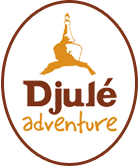- What services does “Djule Adventure ” offer?
We specialize in:
- Trekking: Offering a variety of treks ranging from easy to challenging, like the Markha Valley, Rumtse to Tsomoriri, etc in Zanskar Valley, Changthang valley, Nubra valley
- Mountaineering: Organizing expeditions to peaks like Kangyatse I & II, (6400m & 6170 m), Yalung Nong (6090m ) Nun (7135m) many more in Ladakh & Zanskar.
- Cultural Tours: Providing customized tours across Ladakh, Zanskar, and Kashmir-Manali regions.
- Seasonal Tours: Arranging special tours such as Snow Leopard spotting, monastery festivals, and apricot blossom tours.
- When is the best time to visit Ladakh and Zanskar for trekking?
- Mid May to Mid October : Ideal for most treks due to stable weather and accessible passes.
- January to February: Best for the Chadar Trek, which involves walking on the frozen Zanskar River & best for the Wild life tours.
- Do I need permits for trekking in Ladakh and Zanskar?
Yes, certain areas like Tsomoriri, Tsokar, Pangong Lakes, Dhahanu, and Nubra Valley require permits. These can be obtained through registered travel agencies. Foreign tourists must register at specific points like Drass, Rumtse, and Sarchu if traveling by road.
- How do I acclimatize to the high altitude?
It’s recommended to spend at least 2-3 days in Leh (3500m) before starting any trek. Engage in light activities and stay hydrated to help your body adjust to the altitude.
- What is the difficulty level of the treks?
We offer treks suitable for all levels:
- Easy: Sham Trek (Baby Trek), Spituk to Stok.
- Moderate: Markha Valley, Rumtse to Tsomoriri.
- Challenging: Rumtse to Kibber, Kanji – Sarchu (Diagonal Zanskar).
- What kind of accommodation is provided during treks?
Accommodations include camping in tents and stays in local homestays, depending on the trek route. We ensure comfortable and hygienic arrangements throughout the journey.
- What should I pack for the trek?
Essential items include:
- Warm clothing (thermal wear, down jacket, gloves, beanie).
- Sturdy trekking shoes.
- Sunscreen, sunglasses, and lip balm.
- Personal medication and a basic first-aid kit.
- Reusable water bottle and energy snacks.
- Solar cream, Cold cream etc
- Sleeping bag, Walking stick, head lamp etc
- Is travel insurance necessary?
Yes, we strongly recommend obtaining travel insurance that covers high-altitude trekking, medical emergencies, and evacuation.
- How do I reach Leh?
Leh is accessible by air from major Indian cities like Delhi, Mumbai, and Srinagar. Road access is available via Manali-Leh and Srinagar-Leh highways, which are open from June to September.
- What is the Chadar Trek?
The Chadar Trek involves walking on the frozen Zanskar River during winter (January to February). It’s a unique experience that offers stunning views of the frozen landscape.
- Are there any age restrictions for trekking?
While there’s no strict age limit, participants should be physically fit. We recommend treks like the Sham Trek for families and beginners.
- Do you offer customized tours?
Yes, we provide tailor-made tours based on your preferences, including cultural tours, wildlife spotting, and adventure activities.
- What is the group size for fixed departures?
No, we do not organize fix departures.
- How can I book a trek or tour?
You can book directly through our website or contact us via phone at +91-9596489327 or +91-6005869412 by mail on Djuleadventure@gmail.com
- What payment methods are accepted?
We accept payments via bank transfers and cash. Please note that credit cards are not widely accepted in the region & it cost extra charges.
- What safety measures are in place during treks?
Our experienced guides carry essential safety equipment, including first-aid kits and communication devices. We prioritize your safety and well-being throughout the journey. There will be always an Oxygen Cylinder tank while trek.
- Can I rent trekking gear?
Yes, we offer rental services for essential trekking gear. Please inform us in advance about your requirements.
- Are there any cultural etiquettes I should be aware of?
Yes, while visiting monasteries and local villages:
- Dress modestly.
- Seek permission before taking photographs.
- Respect local customs and traditions.
- What is the weather like in Ladakh?
Ladakh experiences cold and dry weather. Summers (June to September) are pleasant, while winters (October to March) are extremely cold, with temperatures dropping below freezing.
- Do mobile networks work in trekking areas?
Mobile connectivity is limited in remote trekking areas. It’s advisable to inform family and friends about your itinerary in advance.

